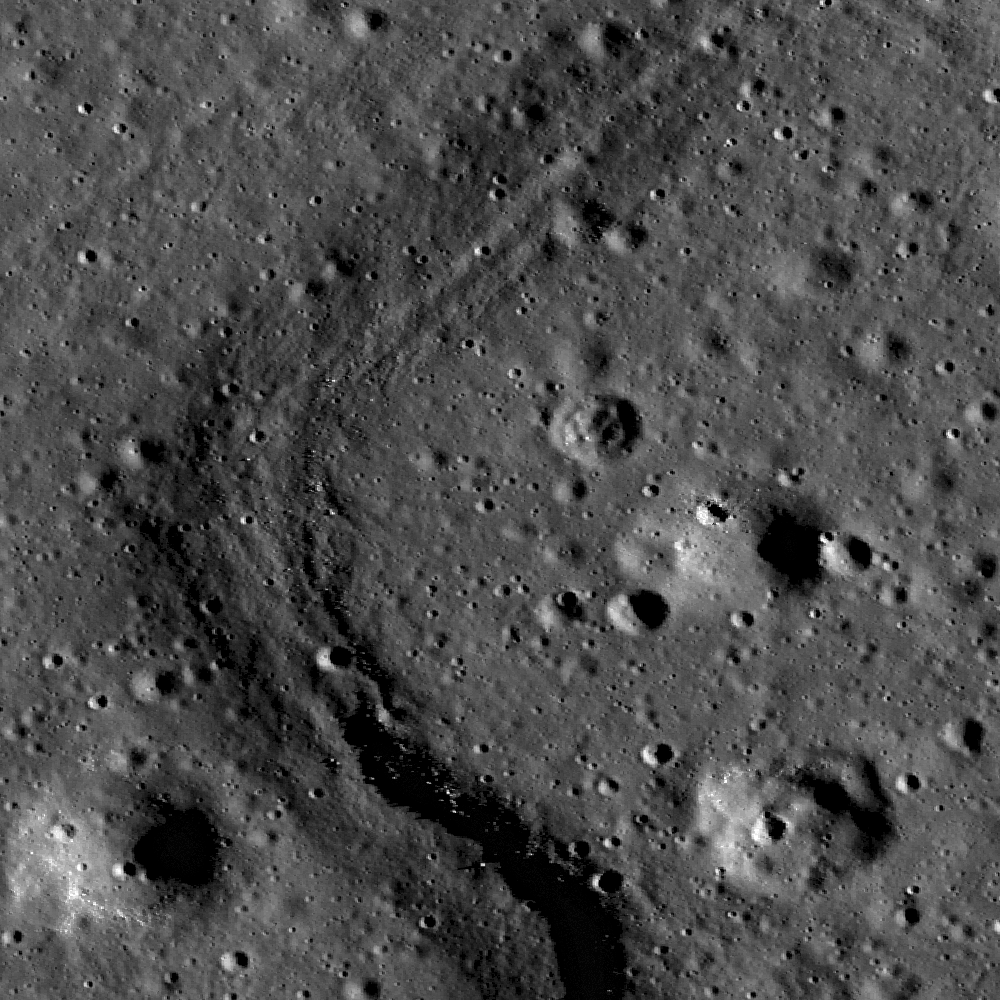
Apollo Basin: A Mare Island in a Sea of Highlands
Unlike features on the nearside, craters and other landforms on the Moon's farside were only discovered beginning with the advent of the space age. Thus, many features have names that reflect more modern historical figures, places, and themes. One such example is the Apollo impact basin, a 538-km wide double-ringed impact crater in the southern hemisphere of the lunar farside, near 36°S, 152°W. This large feature was named in honor of the Apollo lunar explorationprogram, the series of NASA missions from 1968 through 1972 that culminated in twelve astronauts landing on the Moon, conducting scientific experiments, and returning more than 380 kg of lunar samples to the Earth. Many individual craters within the Apollo Basin are named after deceased NASA astronauts and officials, including, most recently, seven craters named after the fallen crew of the Space Shuttle Columbia. Apollo crater is an outstanding example of a concentric, double-ring impact structure, transitional in size between smaller simple bowl-shaped and complex central peak or peak-ring craters and larger impact basins like Orientale. It is actually superimposed on (and thus is younger than) the enormous South Pole-Aitken Basin, an impact structure (one of the largest in the Solar System) that dominates the Farside southern hemisphere. Apollo crater was selected as one of 50 sites for LRO to investigate in great detail as examples of the range of scientific questions and engineering challenges that could be addressed in future human and robotic exploration of the Moon. The specific study area (centered on the white "X" in the WAC context image above) was chosen because of the presence of relatively rare farside mare deposits in close association with the bright, presumably anorthositic highlands materials of the basin's inner ring of mountains. It is possible that because the crater formed on the rim of the South Pole-Aitken Basin, some of the materials excavated and/or uplifted by the Apollo crater impact event may have originated at great depths, perhaps even down to the lunar mantle. The site also offers interesting operational challenges for astronauts and/or robotic missions, offering rare farside opportunities for science and exploration within both highlands and mare terrain.
Explore the Apollo crater Constellation region of interest for yourself, as well as other previously released images showing spectacular views of Orientale Basin and examples of simple bowl-shaped and complex central peak craters.
Published by Jim Bell on 30 March 2010
